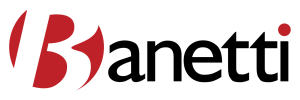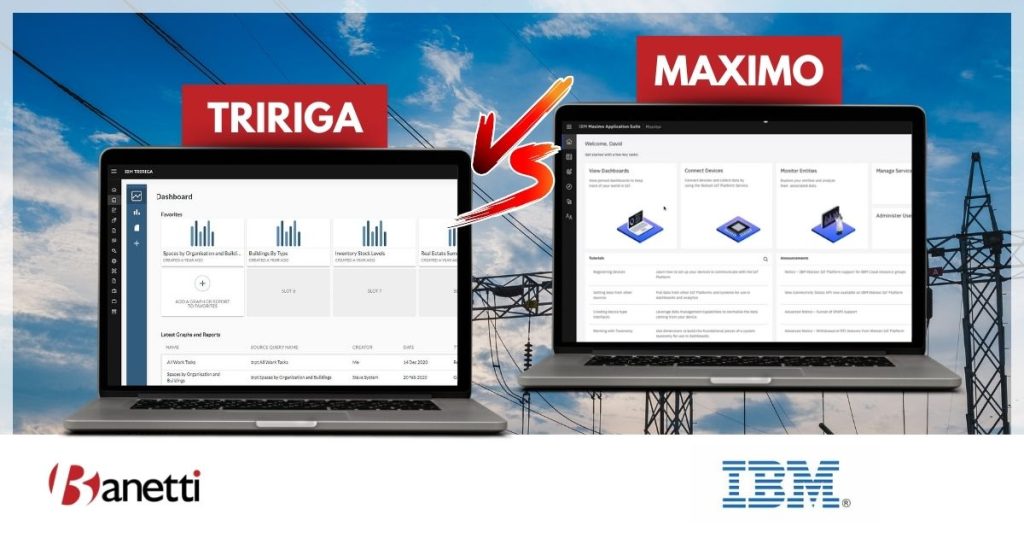5 Min Read
Table of contents

In the ever-evolving landscape of enterprise asset management (EAM) and integrated workplace management systems (IWMS), two software solutions have emerged as industry leaders: Tririga and Maximo. These tools are designed to streamline operations, optimize asset life cycles, and enhance organizational efficiency across diverse industries. While Tririga and Maximo share a common heritage under the IBM umbrella, they cater to distinct yet complementary aspects of enterprise operations.
As these two industry leaders continue to evolve, organizations face the challenge of choosing the most appropriate solution that best aligns with their specific needs and long-term goals. In this comprehensive analysis, we’ll delve into the features, benefits, and nuances of Tririga and Maximo, empowering you to make an informed choice that propels your organization toward operational excellence.
What is TRIRIGA?

Tririga, developed by IBM, is a comprehensive IWMS platform that enables organizations to manage their real estate portfolios, facilities, and workplace operations with unparalleled precision. From space planning and lease administration to maintenance and sustainability initiatives, IBM Tririga offers a suite of integrated modules tailored to meet the unique needs of modern businesses.
What are The Benefits of Tririga?
- Reduce Costs: Tririga’s comprehensive facilities management capabilities provide real-time insights into space usage, energy consumption, and asset performance. This helps companies identify areas for cost savings and drive more efficient use of resources.
- Monitor Building Occupancy Levels: With Tririga’s space management tools, organizations can accurately monitor and analyze building occupancy levels, which is crucial for optimizing space utilization, identifying underutilized areas, and making data-driven decisions.
- Optimize Space: Tririga’s space planning and management features allow organizations to visualize space usage, track occupancy trends, and plan for future needs. This helps organizations ensure their facilities are tailored to their evolving business requirements.
- Predict Maintenance Needs: Tririga’s predictive maintenance capabilities leverage advanced analytics and Internet of Things (IoT) integrations to anticipate asset failures before they occur. This allows organizations to proactively schedule maintenance, minimize downtime, and extend asset lifespan.
- Create a Better Workplace Environment: By managing factors such as space allocation, indoor environmental quality, and facility services, Tririga contributes to employee satisfaction, well-being, and overall workplace experience.
- Safety Measures: From tracking hazardous materials and managing emergency preparedness plans to monitoring safety inspections and incident reporting, Tririga provides a comprehensive framework for mitigating risks and ensuring workplace safety.
What are The Disadvantages of Tririga?
- Complexity and Learning Curve: Tririga is a comprehensive and feature-rich platform, making it complex and challenging to implement and use, especially for organizations with limited resources or expertise.
- Customization Limitations: While Tririga offers a wide range of functionalities that are out-of-the-box, customizing the platform to meet specific organizational needs can be difficult and may require significant investment in customization and integration services.
- High Upfront and Ongoing Costs: Tririga is a premium solution, and the initial licensing and implementation costs can be substantial. Additionally, ongoing maintenance, support, and upgrade costs can add to the overall expense.
- Performance and Scalability Concerns: Some users have reported performance issues, particularly in larger deployments or when integrating with multiple systems, which may impact scalability and user experience.
- Limited Mobile Capabilities: While Tririga offers mobile solutions, some users have criticized the mobile capabilities as limited or lacking in certain areas, potentially hindering field operations and remote access.
What is IBM Maximo?

Maximo, a product of IBM, is a robust enterprise asset management (EAM) and sustainability software that excels in asset management, maintenance operations, and inventory control. Widely adopted across industries such as manufacturing, utilities, and transportation, Maximo empowers organizations to maximize asset reliability, reduce downtime, and optimize maintenance strategies.
What are The Benefits of Maximo?
- Asset Lifecycle Management: The IBM Maximo application suite is a comprehensive software for managing the entire lifecycle of an organization’s assets, from acquisition and deployment to maintenance, repair, and eventual retirement. This holistic approach ensures optimal asset performance, maximizes return on investment, and extends asset lifespan.
- Preventive and Predictive Maintenance: Maximo’s advanced maintenance management capabilities enable organizations to schedule and automate maintenance tasks, track asset conditions, and leverage data analytics. This helps organizations minimize unplanned downtime and reduce maintenance costs.
- Inventory and Spare Parts Management: Maximo streamlines inventory management processes, allowing organizations to track spare parts, optimize stock levels, and ensure availability of critical equipment & components when needed. This capability minimizes inventory-carrying costs while reducing the risk of production or service disruptions due to stock shortages.
- Mobile Workforce Management: With its mobile capabilities, Maximo empowers field technicians and maintenance crews with real-time access to asset data, work orders, and maintenance instructions. This increased mobility and accessibility enhance productivity, improve response times, and facilitate better-informed decision-making on the go.
- Integration and Interoperability: Maximo seamlessly integrates with other systems, including enterprise resource planning (ERP), computerized maintenance management systems (CMMS), and building management systems (BMS). This integration enables data sharing, synchronization, and end-to-end visibility across an organization’s operations.
- Regulatory Compliance: Maximo’s compliance management features help organizations adhere to industry-specific regulations, safety standards, and environmental guidelines. By automating compliance processes, tracking certifications, and generating audit trails, Maximo minimizes the risk of non-compliance and associated penalties.
- Data-Driven Decision Making: With its robust reporting and analytics capabilities, Maximo provides organizations with valuable insights into asset performance, maintenance trends, and operational efficiencies. This data-driven approach empowers decision-makers to make informed choices, optimize resource allocation, and drive continuous improvement.
What are The Disadvantages of Maximo?
- Implementation and Maintenance Costs: Maximo is a premium enterprise-level solution, and the initial implementation costs, including licensing fees, consulting services, and hardware requirements, can be significant, especially for small companies.
- Limited Out-of-the-Box Functionality: While Maximo is a comprehensive solution, some organizations may find that certain industry-specific or niche requirements are not fully addressed by its out-of-the-box functionality. Additional customizations or third-party integrations may be required.
- Integration Challenges: Although Maximo offers integration capabilities with other enterprise systems, the implementation and maintenance of these integrations can be complex and resource-intensive, especially when dealing with legacy or proprietary systems.
What is The Difference Between Tririga and IBM Maximo?
Feature | IBM Tririga | IBM Maximo |
Primary Focus | Integrated Workplace Management System (IWMS) | Enterprise Asset Management (EAM) |
Key Capabilities | Real estate and facilities management, planning of spaces, capital project management, environmental sustainability | Asset lifecycle management, maintenance management, inventory management, mobile workforce management |
Asset Management | Manages building assets, equipment, and infrastructure | Comprehensive asset management, including linear assets |
Maintenance | Facilities and building maintenance management | Advanced preventive, predictive, and condition-based maintenance |
Mobility | Mobile solutions for field workers and remote access | Robust mobile capabilities for technicians and field workers |
Integration | Integrates with enterprise systems | Integrates with enterprise systems |
Reporting and Analytics | Dashboards, KPIs, and reporting for workplace management | Asset performance analytics, maintenance trends, and operational insights |
Compliance | Environmental and sustainability compliance | Industry-specific regulatory compliance, safety standards |
Industry Focus | Facilities management, real estate, corporate operations | Manufacturing, utilities, transportation, asset-intensive industries |
Deployment | On-premises, cloud, or hybrid | On-premises, cloud, or hybrid |
Pricing Model | Subscription-based licensing | Subscription-based licensing |
Tririga vs IBM Maximo: In-Depth Comparison

IBM Maximo and Tririga are both powerful solutions within IBM’s portfolio, catering to different aspects of enterprise management.
Maximo is renowned for its comprehensive Enterprise Asset Management (EAM) capabilities, making it a preferred choice for industries like utilities, manufacturing, transportation, and healthcare. It excels in asset lifecycle management, work order management, preventive maintenance, and supply chain management, offering robust tools to optimize the performance and longevity of physical assets. Strong IoT integration and mobile access through Maximo Anywhere provide real-time asset monitoring and maintenance, though they come with a complexity that may require robust training and learning.
On the other hand, IBM Tririga is tailored to the needs of the Integrated Workplace Management System (IWMS), focusing on real estate and facilities management. It stands out in space utilization, real estate portfolio management, lease accounting, and capital project management, making it ideal for sectors like corporate real estate, education, government, and healthcare. Tririga offers user-friendly interfaces designed to streamline space planning and lease management processes, along with advanced features for energy and environmental management. While it integrates well within IBM’s ecosystem and provides APIs for other enterprise systems, its primary strength lies in optimizing real estate operations and facilities management rather than the comprehensive asset management offered by Maximo.
Final Verdict: Which Solution is The Best Choice?
Both IBM Maximo and Tririga are powerful tools within their domains. By aligning their capabilities with organizational goals and industry requirements, businesses can effectively leverage these platforms to enhance asset performance, optimize space utilization, and drive overall efficiency.
The choice between Tririga and Maximo depends largely on an organization’s specific needs and industry focus. For industries that rely heavily on physical asset performance, such as manufacturing or utilities, Maximo’s advanced asset management and predictive maintenance features make it the superior choice. Its comprehensive tracking and maintenance capabilities ensure assets operate efficiently, reducing costs and downtime. Conversely, Tririga’s integrated approach offers greater value in managing space, leases, and environmental impact. It provides a holistic view that can drive strategic decisions and enhance operational efficiency.
If you are looking to implement IBM Maximo to streamline asset management, get in touch with Banetti. Banetti is an industry leader in Enterprise Asset Management consulting and IBM Maximo implementation. Banetti can help businesses effectively execute asset management strategies that align with their operational goals.
Learn more about Banetti.


